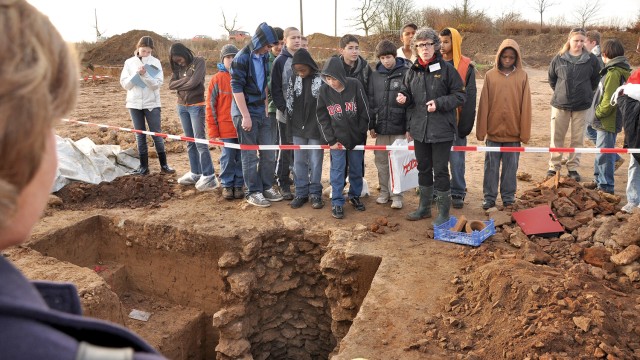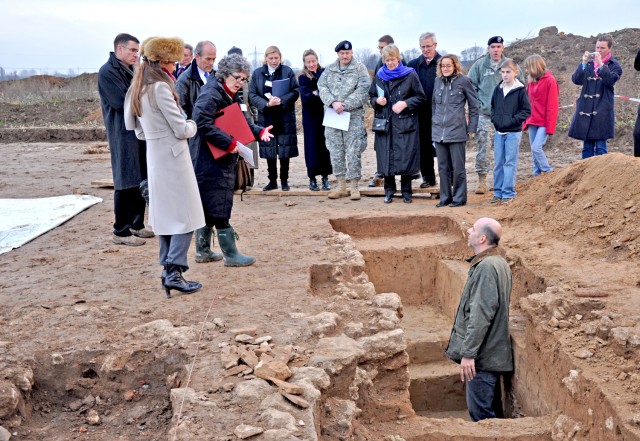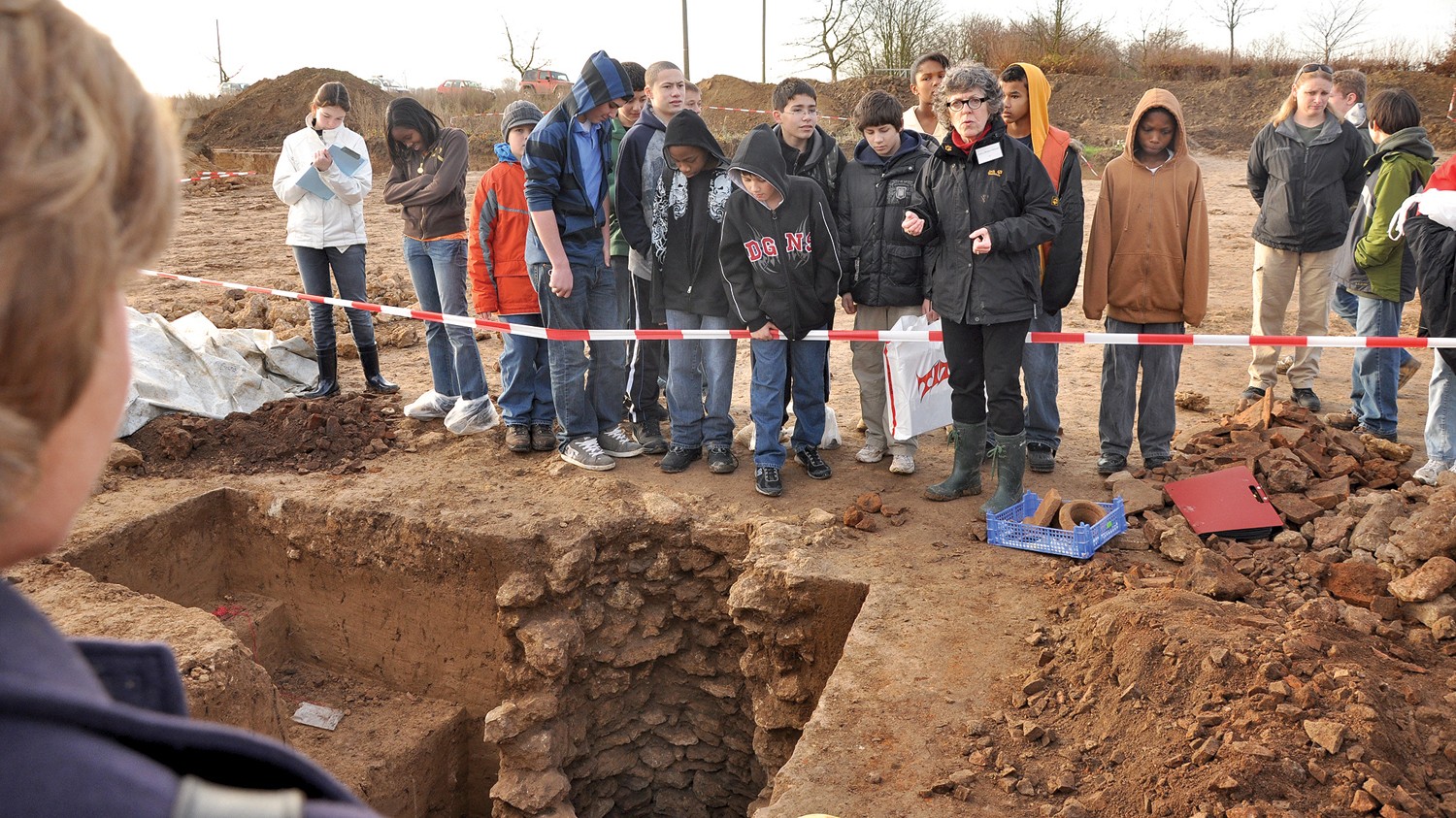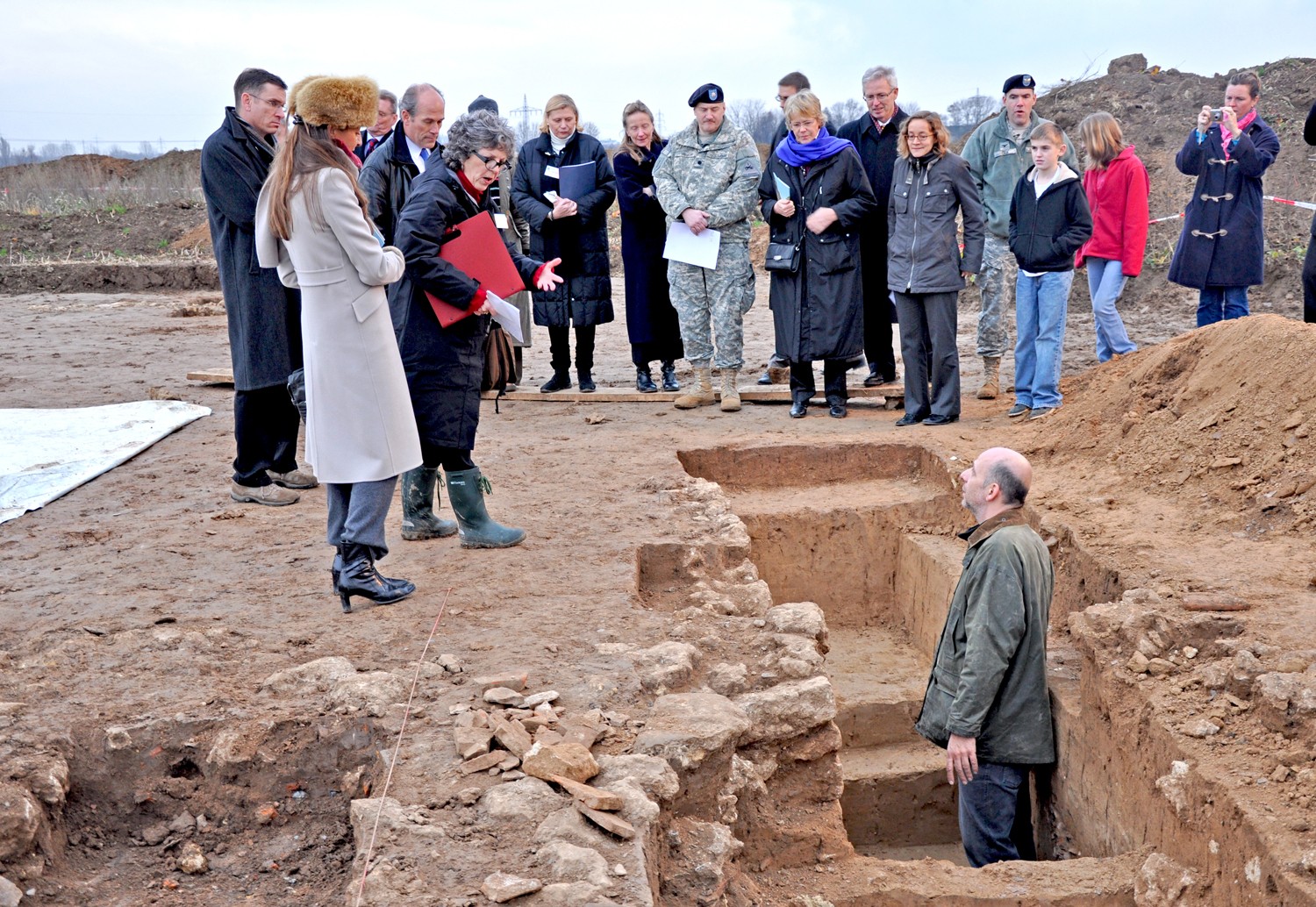WIESBADEN, Germany - As construction crews clear the way for new roads, utilities and housing outside Wiesbaden Army Airfield, a team of archaeologists from the University of Mainz continues to unearth clues as to those who called the area home in centuries past.
A,A
Students from Wiesbaden Middle School, Aukamm Elementary School and Frankfurt International School visited the site Dec. 4 to get a hands-on history lesson and a look at the remains of a Roman settlement dating back some 2,000 years.
A,A
Carola Murray-Seegert, a Frankfurt International School teacher and tour guide at the Roman Saalburg fortress near Bad Homburg, told the students how the excavation has uncovered indications of former Celtic, Roman and medieval settlements.
A,A
"What do you know about the Romans'" asked the former Department of Defense Dependents Schools-Europe teacher before inviting students down into the excavation site. As students recited facts they've acquired while studying Roman history, Murray-Seegert continued on by describing what led to the project. Telling the students that members of the Hessen State Archaeology Office long suspected the farmland near Wiesbaden Army Airfield was once the site of a Roman settlement due to its vicinity to other Roman strongholds such as the garrison in Mainz, she said aerial photographs indicated the presence of military training camps from the era.
A,A
"We think what we have here is a Roman farm - a villa rustica," said Murray-Seegert, adding that historians have assumed there were various Roman settlements in the area after uncovering the remains of a Roman road running from Mainz-Kastel where legionnaires were stationed on the Rhein River to training camps located north of the river.
A,A
Remains of other Roman fortifications such as the Limes boundary in the nearby Taunus Mountains also indicate that Roman civilian settlements were very likely in the area.
A,A
So far at least three stone buildings of the villa rustica have been unearthed on the site including one with a well leading down to pipes used by the Roman inhabitants for water transport.
A,A
"I think it's pretty cool to learn about Roman times," said Wiesbaden Middle School student Sam Salvo, after getting a look at the remains of the well and being told that a dog's skeleton was found at the bottom of the well - which the archaeologists suspect was thrown into the well after the canine died to poison the drinking water used by the Roman settlers.
A,A
"I think it's really scary because they burnt the houses down," said fellow student Brandon Kelly, after examining some charred stones that the archaeologists said were most likely the remnants of the villa rustica after being destroyed in a fire.
A,A
Kelly, who said he studied Roman history in the sixth grade, was not immediately intrigued by the planned visit to the excavation site. "At first I thought it wouldn't be fun, but when I saw all the stuff they have found, I thought it was cool."
A,A
"This is a great opportunity - particularly for our DoDDS kids - right outside of our gates," said Peter Witmer, USAG Wiesbaden's school liaison officer. "This is really educational; it connects to their curriculum."
A,A
Wiesbaden Middle School Advancement Via Individual Determination teacher Chris Thomas said that after piquing students' interest in Roman history during classes in elementary school, the visit was a unique opportunity for a firsthand look at European civilization.
A,A
"They were really excited about coming," said Thomas, adding that AVID students will have the chance to write about the experience and sixth-graders on the tour will report their impressions to fellow Wiesbaden Middle-schoolers. "They've been taking notes and photos and they will share those with their classmates."
A,A
"It's always great to have an opportunity to see history - especially living overseas," he added.
A,A
Claus Bergmann, excavation project leader, said the archaeologists will wrap up their work soon with the coming of winter and frozen ground, but hope to resume explorations early next year, weather permitting. The archaeologists intend to also investigate an early medieval settlement discovered in the area.




Social Sharing